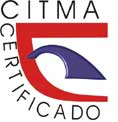Modelación estocástica de la aceleración del terreno para Cuba oriental y la ciudad de Santiago de Cuba
Palabras clave:
aceleración pico del terreno, modelación estocástica, mapa de sacudida, aceleración espectral.Resumen
La región suroriental de Cuba constituye la zona de mayor peligrosidad sísmica del país por su cercana ubicación a la frontera de la placa del Caribe con la placa de Norteamérica. Este artículo presenta dos escenarios posibles de terremotos fuertes localizados a unos 30 km al sur de la ciudad de Santiago de Cuba en términos de aceleración pico del terreno (PGA) y aceleración espectral (PSA). Los valores de aceleración se calcularon para la mayoría de los municipios de la región oriental y para varios puntos de la ciudad de Santiago de Cuba. Se modelaron dos terremotos de magnitudes 7.0 y 7.3, con epicentro en la zona de falla Oriente. Fueron investigados parámetros necesarios en los cálculos como la caída de esfuerzos y la función de atenuación de las ondas sísmicas. Los resultados indican aceleraciones en roca significativas en los municipios de Santiago de Cuba y Guamá con valores que superan los 180 cm/s2. Se obtiene además un mapa de sacudida para la ciudad de Santiago de Cuba considerando la amplificación espectral del suelo. Los valores máximos de aceleración espectral para periodos de 0.3 s alcanzan los 480 cm/s2.Descargas
Citas
Álvarez, L.; Lindholm, C. y Villalón, M. 2016: Seismic Hazard for Cuba: A New Approach. Bull. Seism. Soc. Am, 107(1): 229-239. doi: 10.1785/0120160074.
Boore, D. M. 2009: Comparing Stochastic Point-Source and Finite-Source Ground-Motion Simulations: SMSIM and EXSIM. Bull. Seism. Soc. Am., 99: 3202-3216.
Calais, E. y Mercier de Lepinay, B. 1991: From transtension to transpression along the northern Caribbean plate boundary off Cuba: implications for the Recent motion of the Caribbean plate. Tectonophysics, 186: 329-350.
Candia, G.; Macedo, J.; Jaimes, M. A. y Magna, C. 2019: A new State-of-the-Art Platform for Probabilistic and Deterministic Seismic Hazard Assessment. Seismological Research Letters, 90(6): 2262-2275.
Cotilla, M. O. y Córdova, D. 2010a: Notes on three earthquakes in Santiago de Cuba (14.10.1800, 18.09.1826, 07.07.1842). Russian Geology and Geophysics, 51: 228-236
Cotilla, M. O. y Córdova, D. 2010b: The August 20, 1852 earthquake in Santiago de Cuba, Russian Geology and Geophysics, 51: 1227-1246
Cotilla, M. O. 2003: The Santiago de Cuba earthquake of 11 june 1766: Some new insights. Geofísica Internacional, 42(4): 589-602.
D’Amico, M.; Tiberti, M. M.; Russo, E.; Pacor, F. y Basili, R. 2017: Ground‐Motion Variability for Single Site and Single Source through Deterministic Stochastic Method Simulations: Implications for PSHA. Bull. Seism. Soc. Am, 107(2): 966-983. DOI: 10.1785/0120150377.
Havskov, J. y Ottemoller, L. (Eds.) 2008: SEISAN, The earthquake analysis software for Windows, SOLARIS, LINUX and MACKINTOSH Version 8.2. Manual, Department of Earth Science, University of Bergen, Norway.
Moreno, B.; Grandison, M. y Atakan, K. 2002: Crustal velocity model along the southern Cuba margin: implications for the tectonic regime at an active plate boundary. Geophys. J. Int., 151(2): 632–645.
Mase, L. Z. 2020: Seismic Hazard Vulnerability of Bengkulu City, Indonesia, Based on Deterministic Seismic Hazard Analysis. Geotech Geol Eng 38, 5433–5455. DOI: 10.1007/s10706-020-01375-6.
Motazedian, D. y Atkinson G. M. 2005: Stochastic finite-fault modeling based on a dynamic corner frequency. Bull. Seism. Soc. Am., 95: 995-1010.
Rivera, Z. C.; Slejko, D.; Caballero, L. F.; Alvarez, J. L. y Santulin, M. 2015: Soil amplification in Santiago de Cuba. Journal: Atti del 34 Convegno Nazionale del Gruppo Nazionale di Geofisica della Terra Solida. Tema 2: Caratterizzazione sísmica del territorio. ISBN: 978-88-940442-6-3.
Sanò, T. y Pugliese, A. 1991: PSHAKE, Analisi Probabilistica della Propagazione delle Onde Sismiche. Ente per le Nuove Tecnologie, L’Energia e L’Ambiente (ENEA), Direzione Sicurezza e Protezione.
Sanò, T. 1996: BESOIL un programma per il calcolo della propagazione delle onde sismiche. Servizio Sismico Nazionale.
Sharbati, R.; Khoshnoudian, F.; Ramazi, H. R. y Amindavar, H. R. 2018: Stochastic modeling and simulation of ground motions using complex discrete wavelet transform and Gaussian mixture model. Soil Dynamics and Earthquake Engineering, 114: 267-280. DOI: 10.1016/j.soildyn.2018.07.003.
Wells, D. y Coppersmith, K. 1994: New empirical relationship among magnitude, rupture length, rupture width, rupture area, and surface displacement. Bull. Seism. Soc. Am., 84: 974-1002.
Zhang, Y.; Romanelli, F.; Vaccari, F.; Peresan, A.; Jiang, C.; Wu, Z.; Gao, S.; Kossobokov, V. G. y Panza, G. F. 2021: Seismic hazard maps based on Neo-deterministic Seismic Hazard Assessment for China Seismic Experimental Site and adjacent areas. Engineering Geology, 291. DOI: 10.1016/j.enggeo.2021.106208.
Publicado
Cómo citar
Número
Sección
Derechos de autor 2023 Bladimir Moreno Toiran, Zulima Caridad Rivera Alvarez, Mathilde Sorensen

Esta obra está bajo una licencia internacional Creative Commons Atribución-NoComercial 4.0.
Los autores que publican en esta revista están de acuerdo con los siguientes términos:
- Licencia Creative Commons Atribución-NoComercial permite que el beneficiario de la licencia tenga el derecho de copiar, distribuir, exhibir y representar la obra y hacer obras derivadas para fines no comerciales siempre y cuando reconozca y cite la obra de la forma especificada por el autor o el licenciante.
- Los autores pueden establecer por separado acuerdos adicionales para la distribución no exclusiva de la versión de la obra publicada en la revista (por ejemplo, situarlo en un repositorio institucional o publicarlo en un libro), con un reconocimiento de su publicación inicial en esta revista.
- Se permite y se anima a los autores a difundir sus trabajos electrónicamente (por ejemplo, en repositorios institucionales o en su propio sitio web) antes y durante el proceso de envío, ya que puede dar lugar a intercambios productivos, así como a una citación más temprana y mayor de los trabajos publicados (Véase The Effect of Open Access) (en inglés).
- Lo anterior debe realizarse siempre sobre el artículo ya publicado por Minería y Geología.
La revista permite que los autores tengan los derechos de autor sin restricciones
La revista permite que los autores conserven los derechos de publicación sin restricciones









